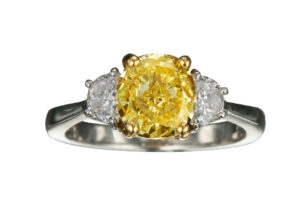By Jennifer Heebner, Editor in Chief
As the Russia-Ukraine war rages on, so do ethics issues with Russian-origin Diamonds. Russian miner Alrosa is the largest in the world, and its proceeds help fund Russia’s war on its western neighbor.
While the U.S. banned direct imports of Russian-origin Diamonds in 2022, ones cut and polished in third-party countries have been permitted. In 2024, that changes under guidelines set forth by the Group of 7 (G7) countries and supported by the Biden administration.

G7 comprises seven countries with the world’s most powerful economies, including the U.S., Canada, France, Germany, Italy, Japan, the United Kingdom, and the European Union, or EU (a non-enumerated member). G7 members convene to address global challenges, such as how to handle sales of Diamonds from warring nations like Russia.
Policy experts have been telling the American jewelry industry for the past two years that this perceived loophole of “substantial transformation” established by the U.S. government was in place only to give firms enough time to find other products to sell besides Russian Diamonds.

G7 Guidelines & Presidential Support
G7 leaders met virtually on Dec. 6 to address a variety of pressing world issues. The group issued a statement afterwards, revealing that all G7 members would implement “import restrictions on non-industrial diamonds, mined, processed, or produced in Russia, by January 1, 2024, followed by further phased restrictions on the import of Russian diamonds processed in third countries targeting March 1, 2024.” Further, “G7 members who are major importers of rough diamonds will establish a robust traceability-based verification and certification mechanism for rough diamonds within the G7 by September 1, 2024.”
More details were released in a question-and-answer document later in December by the European Commission (EC): Russian-origin Diamonds weighing a carat or more that are polished elsewhere and imported to G7 countries would be banned as of March 1, 2024. Additionally, the Sept. 1, 2024, ban would “be expanded to also include lab grown diamonds, jewellery and watches incorporating diamonds with a weight of 0.5 carat and above.”

On Dec. 22, 2023, President Joe Biden reinforced the G7’s decisions by signing an executive order (EO). A fact sheet from the White House, released on the same day as the EO, explains it:
“… The E.O. will also make it more difficult for specific Russian goods to enter the United States after being modified in a third country. In the coming months, the United States and our partners intend to introduce import restrictions on certain diamonds mined, processed, or produced in Russia, building on an existing U.S. ban on the importation of Russian-origin diamonds. Today’s E.O. amends Executive Order 14068 to provide the authority to ban, following a determination from appropriate U.S. departments and agencies, the importation of certain products mined, extracted, produced, or manufactured wholly or in part in Russia, even if these products are then transformed in a third country.”
Specifics on how to accomplish this, however, are TBD—stay tuned.

Blockchain Future
Contents of the Q&A released by the EC explain the thought process behind the traceability and certification mechanism, calling for the use of a “blockchain-based ledger.”
“… To prevent Russian diamonds from entering the G7 market, diamonds need to be traced from ‘the mine to the finger’. Hence the traceability system includes a mandatory registration, using so called ‘digital twins’ of the real diamond in its rough state and issuing a certificate of its origin. The identifying information and certificate will be entered in blockchain-based ledger. This allows the diamond to be traced through the production process and can be presented at the time of importation of the finished diamond.”
Imports of Russian Diamonds to the EU have plummeted 80% from July 2022 to April 2023, reflecting a financial loss of €1.3 billion. The EC speculates a further drop to 90% once 2023 numbers are tallied.

Despite these efforts, Diamonds sold from Russia to third-party countries, where they are cut and polished, still “find their way back to G7 countries with a change of origin,” says the EC. “That is why a ban on Russian diamonds polished in a third country is also necessary.”
This is proprietary content for the AGTA and may not be reproduced.
